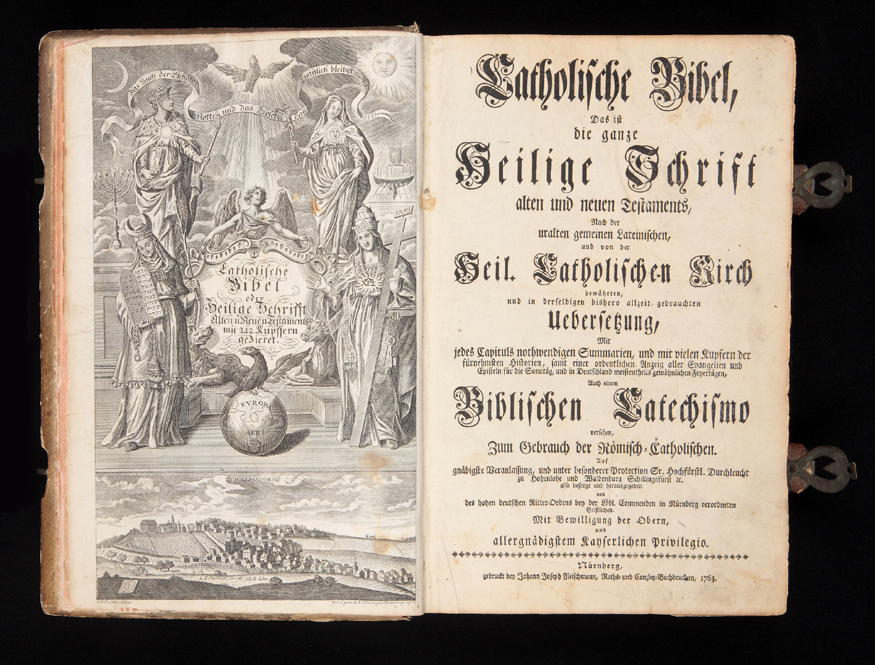Great collections yield great stories. That is the premise of the “Grolier Club Collects” show, which in its first incarnation in 2002/2003 gathered 135 books, manuscripts and works on paper drawn from its international membership and put them on view accompanied by the collectors’ individual stories of why these items are special to them and how they came into their possession. Collector Arthur Schwarz collaborated with the club’s director Eric Holzenberg for “Grolier Club Collects II,” a second version of the 2002 show, on view through February 6, to select and install an equal number of rare, unusual, surprising and always informative examples of the book arts.
Tell us a bit about yourself and your collecting area.
I’m very much an amateur, having spent my life away from the book world in the municipal bond industry from which I retired in 1998. My collecting interest is largely focused on English history and particularly books about London, English royalty and Tudor England. I curated a major exhibition at the Grolier Club in 2009, “Vivat Rex!,” which commemorated the 500th anniversary of the accession to the throne of Henry VIII.
How are objects displayed at the club?
This show is on the club’s ground floor, where the displays are in ten large wall cases and a large flat case, with several framed items displayed on the wall.
How did the first show in 2002 come about?
It was kind of by luck. We had an exhibition — I can’t now remember what it was — scheduled to open in December 2002 and about a year before that the exhibitor pulled out. It takes two to three years of planning for an exhibition and all of a sudden we had a hole in the schedule. Somebody came up with the idea having an exhibition with club members showing what was special to them. It was put together in only a year!
Has the mix changed at all over the 12 years between the shows?
A little bit. We had two or three music items before, but effectively, it’s almost the same — 13 categories, including Americana, history, theology, science and medicine, literature, voyages and maps, association copies, literature, illustrated and artist’s books, fine printing and book arts, bindings, bibliography and book history, photographs and prints drawings and other works on paper.

Katholische Bibel, das ist die ganze Heilige Schrift alten und neuen Testaments [Catholic bible. The Scriptures, Old and New Testaments],
Nuremberg: Johann Joseph Fleischmann, 1763.
From the collection of Alexander M. Goren.
In my “Curator’s Choice” lecture for the show I pointed out what Eric and I and the selection committee chose to display and which of the 132 items are my favorites. It’s a very personal list and I daresay no one else would come up with the same list. I have my own interests, prejudices and preconceptions about what’s important in book collecting. I tried hard not to make it because an item is a very rare or important book. That’s not the point. It’s a show about collecting and most of my choices tell us about collecting and what drives collectors in the process. I love it when the story behind the item is as interesting as the item itself.
What is your personal favorite in the show?
I like to see things that tie into the collector in a way. For example, the very first thing, going around the room, is a manuscript diary kept by a man named Johnson Mason Jr (1796–1882) written during his stay in Newport, Ky., and through his return to his hometown of Medford, Mass., December 1831–May 1832. It details the specifics of the hemp factory he was building, his religious thoughts and activities, the weather, etc. What makes this particularly interesting to me is that its owner is a woman named Ellen Dunlap, now president of the American Antiquarian Society, the largest national research library in American history, literature and culture through 1876. And this diary was kept by her great-great-great-grandfather.
That is very cool. Another example?
A Catholic bible illustrated with 212 engravings, owned by a man named Alexander Goren, a New York investor and collector, who on a freezing night in Cambridge in December 1958 around 2 am was walking back to his dorm room after pulling an all-nighter for a final exam. “I passed an old bookstore,” he writes, “and a big old book beckoned to me from the window display. In the darkness, I could only tell that it was a German bible. And it was the first time I felt: I must have this.” He purchased what he deemed “the object of my desire,” and it has remained with him for nearly 60 years, with a place of honor in his library, although he is not Catholic nor does he read German. But such is bibliophily.
—W.A. Demers


